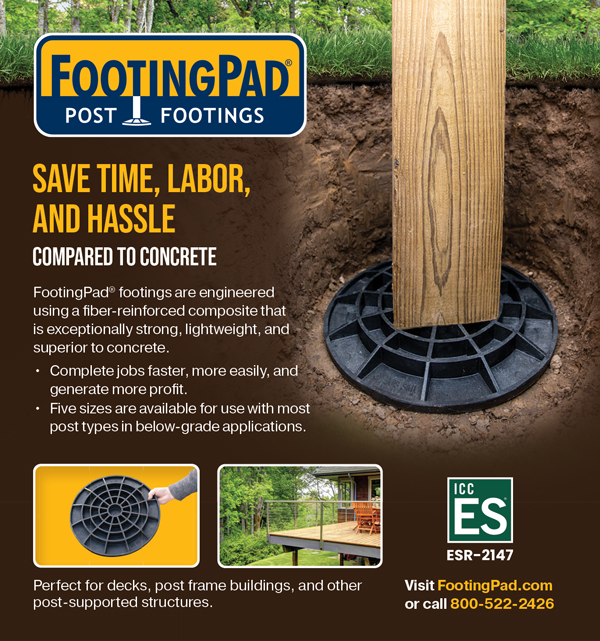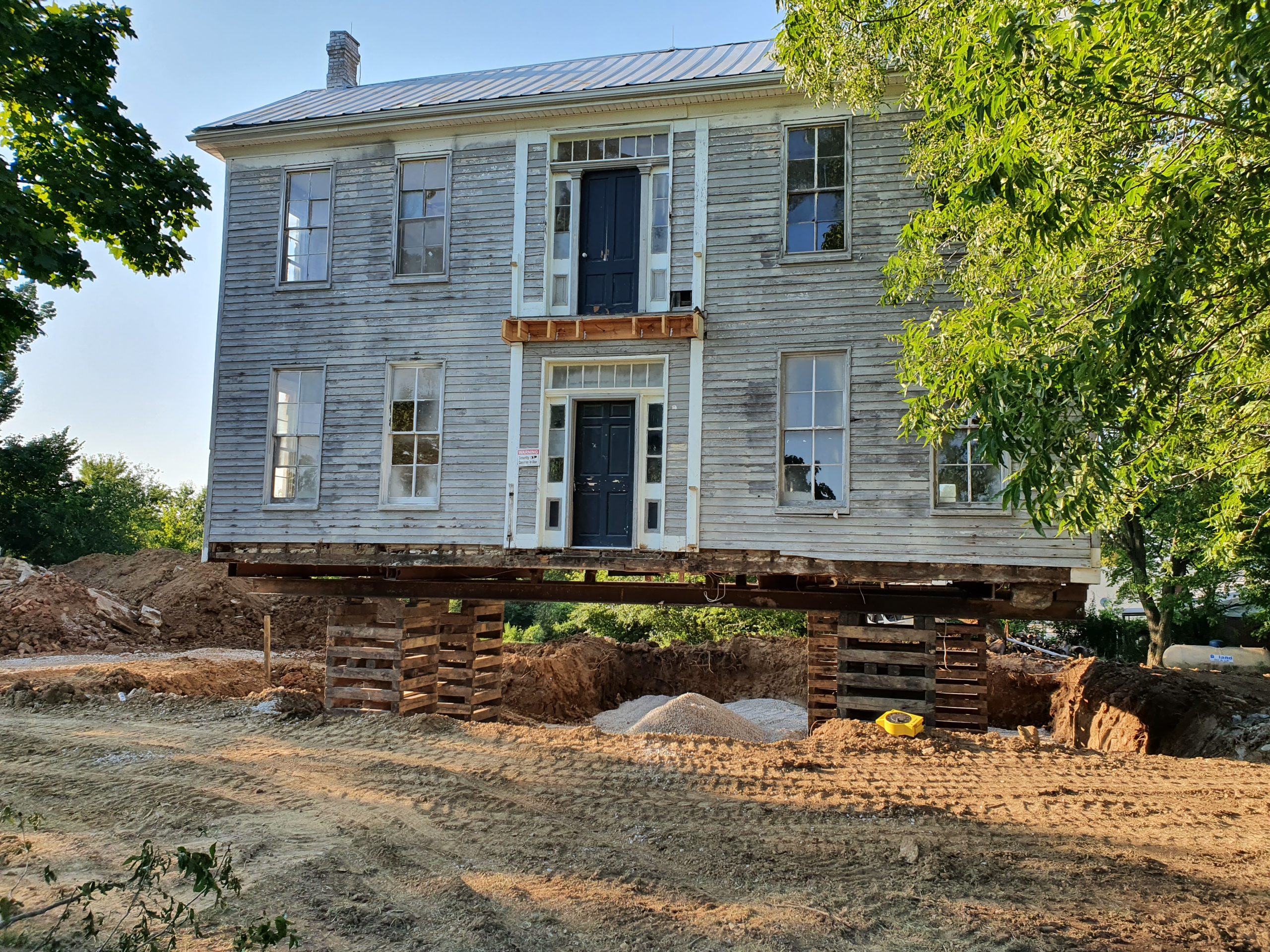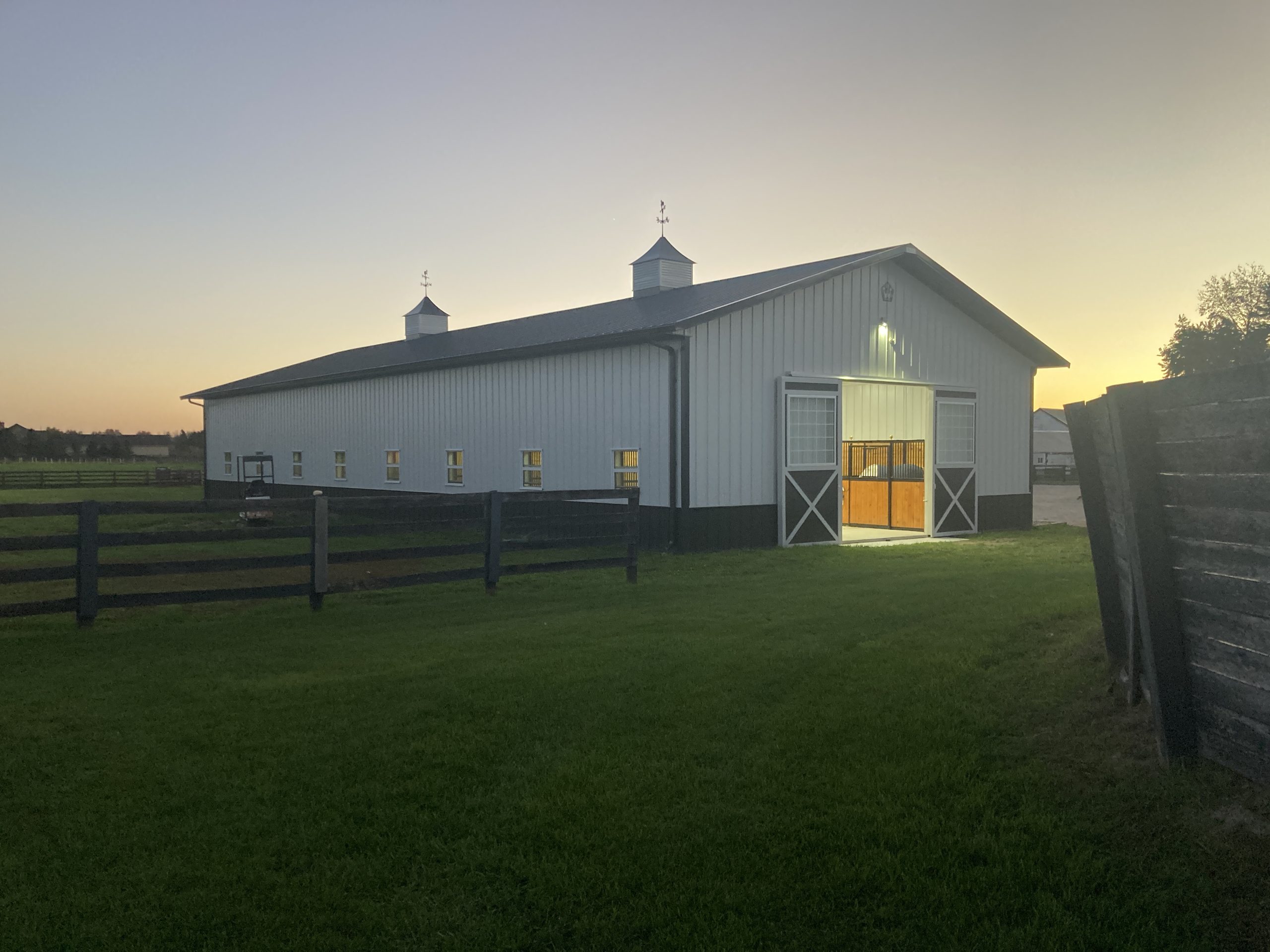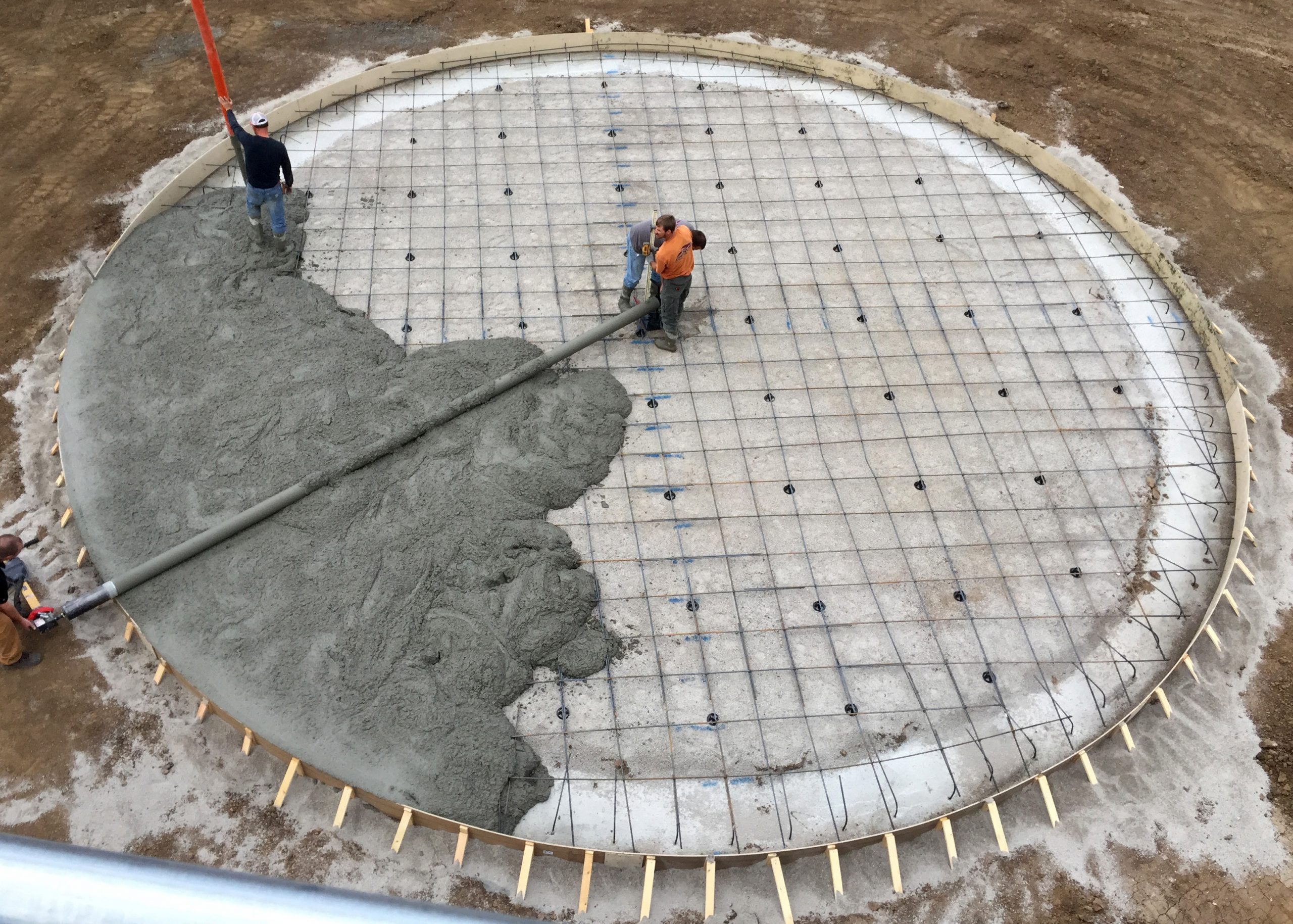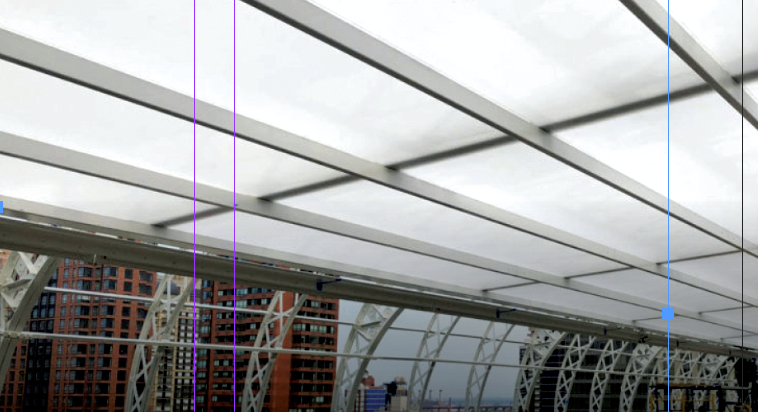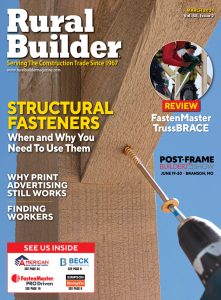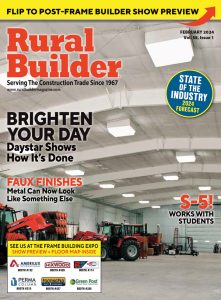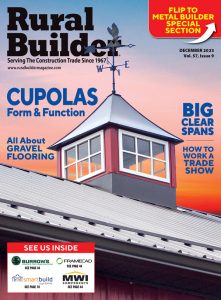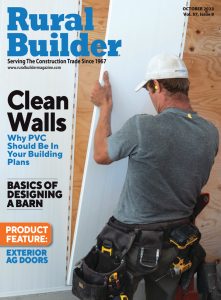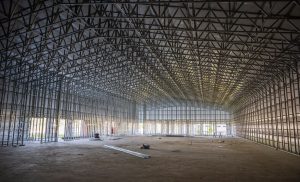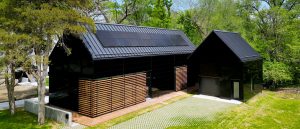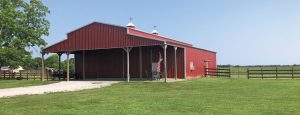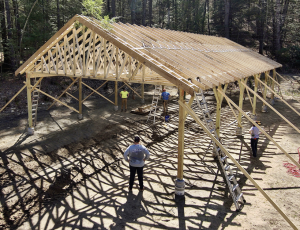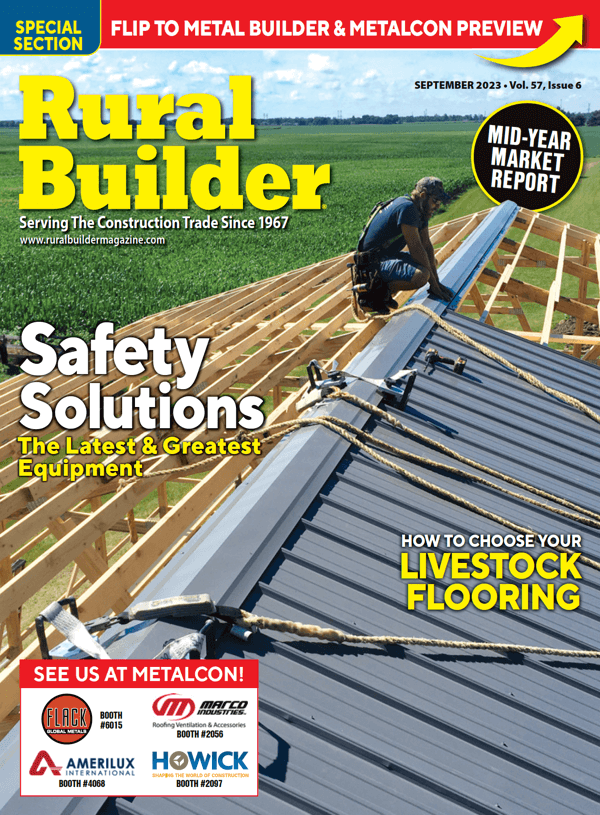An environment doesn’t have to be overtly caustic to damage steel; moisture and other naturally occurring elements in the air will cause corrosion. Unless a protective coating is applied—or developed—steel will deteriorate to the point of failure.
“The definition of corrosion is ‘the chemical or electrochemical reaction between a material, usually a metal, and its environment that produces a deterioration of the material and its properties,’” explained Gary Edgar, Technical Lead, PPG Industrial Coatings. “Corrosion causes loss of metal, which affects the adhesion of the coating system, but if left untreated, the integrity of the panel will be compromised, become pitted and the exterior roof/building envelope will eventually be breached.”
Coatings
Tyler Roose, Director of Sales Development at American Building Components, explained how a Galvalume® coating protects the steel to which it is applied: “Coatings and metal substrates are applied to the roll formed panel before it is painted. These substrates are added to help protect the raw iron ore steel from corrosion. For instance, Galvalume is a sacrificial element, sacrificing itself to help protect the steel. Often, in areas where moisture is prevalent, you will see a thin line of rust at the cut edge of a Galvalume panel. This is the Galvalume going to work to protect the steel; it acts as a buffer and ‘scabs’ over to try and contain the corrosion of the steel.”
To further prevent metal from corroding, PPG’s Gary Edgar explained, “Coatings provide a barrier to prevent the metal from being exposed to oxygen, moisture, chlorides (salt) and chemical pollution. High build primers and clear coats can help ensure long-term performance against corrosion.
“High build primers create a thicker barrier between the metal and pretreatments, which prevents moisture contact with the steel,” he continued. “Clear coats add another layer of protection against salts and chemical pollution, along with adding additional UV protection that can easily be cleaned.”
Edgar spoke specifically about some of the PPG coating options: “Two-coat systems, standard primers and finish coats provide excellent performance in most environments. Specifically, thick film and chrome primers, along with a clear coat, are recommended in seacoast and industrial environments. [PPG’s] Duranar XL Plus uses a thick film urethane primer, providing excellent adhesion and barrier protection, along with the Duranar color and clear, providing the best option for aggressive environments.”
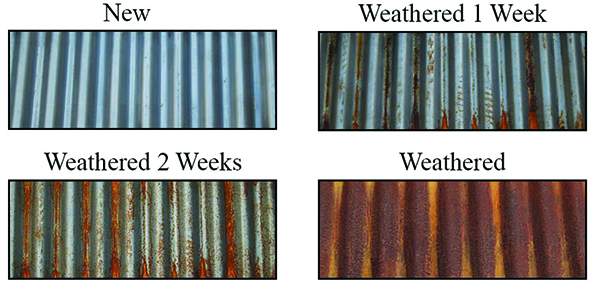
Damage Hastens Corrosion
Keeping the steel substrate from being exposed to the atmosphere is important when it comes to corrosion prevention. Some best practices for preventing damage at the job site: “Proper storage of bundles, such as reducing the time panels sit stacked in bundle form [so as] to not contract moisture, avoiding foot traffic on and around panels, proper cutting and trimming of panels and trim, and avoiding the use of dissimilar metals,” Roose advised.
“If a panel is compromised,” cautioned Edgar, “it’s important to repair it immediately to avoid corrosion. The longer the damage goes without being addressed, the larger the repair will become, creating a greater chance for corrosion to occur.
“For example,” he continued, “if the finish is damaged but the primer is intact and repaired quickly, just a simple touch-up of the finish coat will be required. If left untended, the primer can begin to break down from UV exposure and start to fail, thus no longer protecting the metal substrate, opening the door for potential corrosion.”
Roose stressed how easily damage can occur: “Avoid foot traffic on the metal panels. It may sound simple, but oftentimes we receive claims of scratched panels, where it is evident that the installer had walked on the panels and scratched them. It is also very common to see surface rust on panels around door and window areas. In many cases, the installer has used an abrasive tool in cutting the panels in these areas, and the hot metal filings have stuck to the painted panel, resulting in rust spots. There are many great tools in the industry made for cutting metal panels and trims, such as nibblers, shears, snips, etc. Taking a shortcut and using an abrasive may save time in the short term, but it creates issues and unhappy customers in the long term.”
Once a panel’s finish has been compromised, it doesn’t take long for the steel to corrode. “If corrosion has already begun,” explained Edgar, “the area needs to be repaired using proper surface preparation recommendations, along with the appropriate primer and finish coat for the repair.”
When queried about how to deal with damage, Roose advised, “Typically, if it is a small scratch on the paint and does not bore all the way into the substrate of the panel, the scratch can be corrected by using color-matching touch-up paint. Avoid using spray paint at all costs. Spray paint is not the same quality as the baked-on finish of the metal panels and will fade and discolor at a much faster rate.
“If the damage is severe,” he continued, “always order a replacement panel to ensure quality installation. We always try to recommend to customers, especially on products with longer lead times, to order an extra panel or two in case damage occurs during installation.”
Protective Oxidation
Weathering steels (commonly referred to as “corten”) are designed to develop a protective oxide film on the metal’s surface to slow the metal panel’s deterioration. “A606/A588 resists the corrosive effects of rain, snow, ice, fog and other meteorological conditions by forming a coating of dark brown oxidation over the metal, which inhibits deeper penetration and negates the need for painting and costly rust-prevention maintenance over the years,” explained Stacy Rubio, Vice President of Sales for Western States Metal Roofing, manufacturer of A606-4 weathering steel and bare cold-rolled steel roofing, siding, panels, coil and flat sheets. “In simple terms, the steel is allowed to rust, and that rust forms a protective coating that slows the rate of future corrosion.”
The weathering process “eventually decreases and from that point on the finish acts as a protective coating for the base metal. This protective coating essentially stops the corrosion. Laboratory analysis of the rust film have shown that the alloying elements in the steel, particularly copper, chromium and nickel produced insoluble compounds that clogged the pores at the rust/steel interface, thereby ending the regeneration,” explains the product website, www.corten.com.
Rubio further explained the material will rust the same regardless of whether it has superficial damage like dents, scratches or scuffs. And, once started, it will continue to oxidize. “You could seal the panel to keep it from visually continuing to rust,” she said, “but once the rusting process has started, it will slowly continue to rust from the inside.”
Weathering steels or bare steels are lower-cost options for buildings on which a “rustic” appearance is desired. However, weathering steel has limitations that coated steels don’t have. The manufacturer advises it is best suited for environments with low humidity and should not be used in climates with exposure to salt or in climates with excessive moisture, as it requires alternating wet and dry cycles to form a properly adhered protective layer of oxidation.
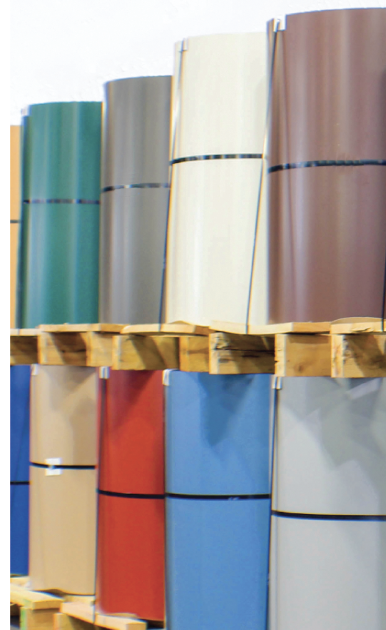
Additional points to remember:
• Using it with dissimilar metals will shorten the life span of the product.
• Stainless steel fasteners must be used to prevent galvanic action.
• The recommended minimum roof slope is 3:12 to prevent water from pooling on the surface.
• The rust runoff will likely stain the surrounding surfaces.
Also for consideration: There are no warranties for these products and there are no engineering load charts or wind uplift information because any engineering that was accurate when the product was delivered would be different after years of rusting.
Conclusion
Efforts to prevent corrosion are efforts to stop nature. “Understanding the environment and the intended expectations of the coating/structure’s long-term performance are the key drivers of selecting a coating system,” explained Edgar. “The corrosion process wants to occur by nature, but the process can be slowed and managed with proper substrates and coating selections, along with cleaning and maintenance.”


